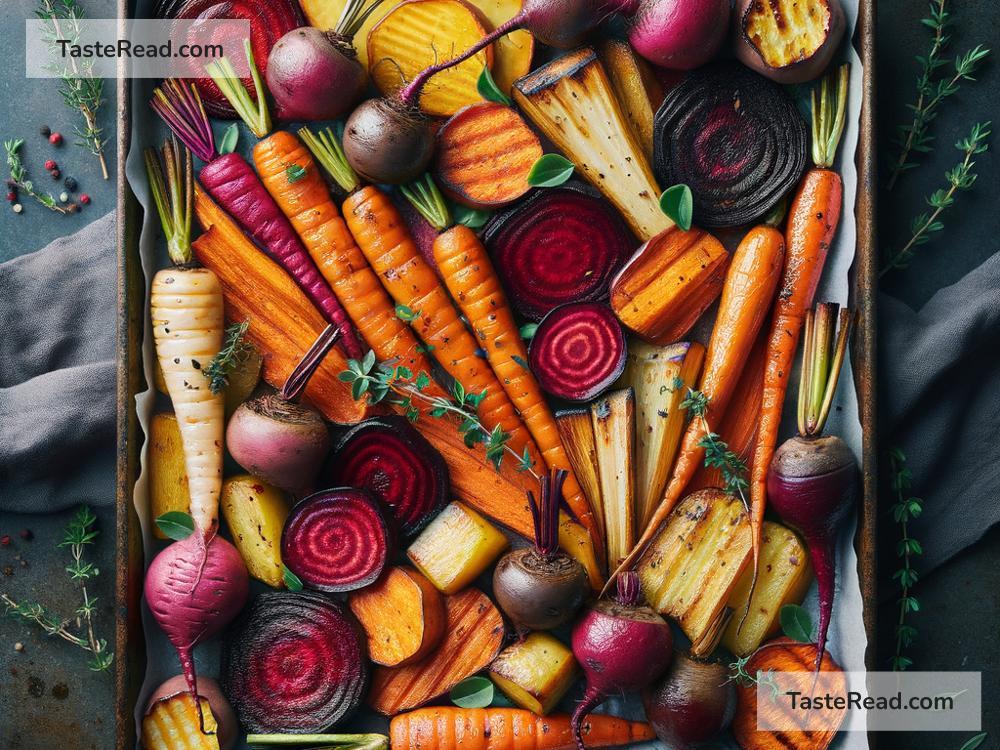How Roasting Activates the Natural Sugars in Root Vegetables
Root vegetables are a beloved part of many meals worldwide. Whether it’s sweet potatoes, carrots, beets, or parsnips, these earthy gems offer endless possibilities for delicious dishes. But one cooking method, in particular, stands out when it comes to showcasing their sweet and savory goodness: roasting. Have you ever wondered why roasted root vegetables taste so sweet and caramelized? The secret lies in how their natural sugars get activated during the roasting process. In this blog, we’ll explain the science behind it in simple English, share tips for perfect roasting, and get your mouth watering for your next root veggie feast!
The Science Behind Roasting
Root vegetables, such as potatoes, carrots, and turnips, have something special inside them: natural sugars. These sugars are stored in the vegetable as part of their growth process. For instance, root vegetables like carrots develop their sweetness underground as they pull nutrients from the soil and convert sunlight into energy through photosynthesis. The result? They store carbohydrates (sugars) that they use for later growth.
Now here’s the fun part. When you roast a root vegetable, you expose it to high heat in the oven, which sets off a chemical reaction called the Maillard reaction and caramelization. Both of these processes involve the breakdown of sugars, but let’s take a closer look at what’s happening:
-
Maillard Reaction:
The Maillard reaction occurs when heat causes the natural sugars and proteins in the vegetable to collide and interact. This reaction is responsible for those lovely golden-brown spots that develop on roasted foods. It’s what gives roasted carrots and sweet potatoes their tantalizing savory flavors that balance sweetness with a hint of nuttiness. -
Caramelization:
Caramelization happens as the natural sugars in the vegetable heat up and break down. As the temperature rises, the sugars transform into caramel-like compounds that enhance the vegetable’s sweetness. Think of the golden glaze you see on roasted beets or sweet potatoes—that’s caramelized sugar at work!
Why Roasting Brings Out the Sweetness
Cooking methods like boiling or steaming root vegetables are great for preserving nutrients. However, they don’t do much to activate the sweetness locked inside. Roasting, on the other hand, uses dry heat to intensify flavors and highlight the sugars inside each vegetable.
Here’s why:
-
Higher Temperatures:
Roasting typically requires an oven temperature of 375°F to 450°F (190°C to 230°C). These high temperatures drive the caramelization and Maillard reaction, something that doesn’t happen at the lower temperatures involved in boiling or steaming. -
Reduced Moisture:
The dry heat of an oven removes moisture from the surface of the vegetables, allowing the sugars inside to concentrate. This creates those sweet, caramelized bites that melt in your mouth. -
Direct Contact:
Roasting often involves spreading vegetables evenly on a baking sheet. This direct contact with the hot surface can speed up browning, making every bite a combination of tender and crispy textures.
How to Roast Root Vegetables Perfectly
Roasting root vegetables isn’t complicated, but a few tips can help you maximize sweetness and flavor:
-
Choose Fresh Veggies:
Opt for fresh, firm root vegetables for the best results. Overly mature vegetables can sometimes taste woody or bland. -
Cut Evenly:
Cut your vegetables into uniform pieces to ensure they cook evenly. Smaller pieces roast faster and tend to caramelize more effectively. -
Use Oil:
Toss your vegetables in olive oil or another preferred cooking oil before roasting. Oil helps the vegetables brown and amplifies their flavor. -
Season Smartly:
Add salt and pepper for a simple seasoning. If you want extra flavor, sprinkle on spices like paprika, garlic powder, or even cinnamon for a sweet-savory twist. -
Spread Them Out:
Don’t overcrowd your baking sheet! Overlapping pieces can steam instead of roast, leading to softer vegetables rather than crispy caramelized ones. -
Temperature Matters:
Aim for a temperature between 375°F and 425°F. If you’re chasing deep caramelization, go on the higher end of this range. -
Stir Occasionally:
Give your vegetables a stir or flip midway through cooking to ensure they roast evenly. -
Test for Tenderness:
Use a fork to check whether the vegetables are cooked through. They should be tender but still hold their shape.
Why It Feels Like Magic
There’s a reason roasted vegetables feel like a treat rather than a chore to eat. By unlocking their natural sweetness, roasting transforms simple vegetables into something you’ll crave. A roasted carrot isn’t “just a carrot” anymore—it’s a flavorful, slightly crunchy slice of heaven. Sweet potatoes go from starchy to dessert-like with roasted caramelization. Even earthy vegetables like beets or parsnips take on new dimensions of flavor.
Root vegetables are already nutritious, loaded with vitamins, minerals, and fiber. Roasting them adds another layer of appeal, making it easier to include them in your diet. Once you experience the way caramelization enhances their natural sugars, it becomes hard to go back to plain boiled or steamed veggies.
Final Thoughts
Roasting is a simple yet magical way to bring out the best in root vegetables. The high heat works wonders, transforming starchy vegetables into sweet, caramelized delights bursting with flavor. Next time you’re looking for a healthy and delicious addition to your meal, give roasted root vegetables a try. Your taste buds will thank you!
So, grab those carrots, sweet potatoes, or parsnips, fire up the oven, and let the natural sweetness shine. Whether you’re roasting for a holiday feast or a simple weeknight dinner, you’re in for a treat. Happy cooking!


